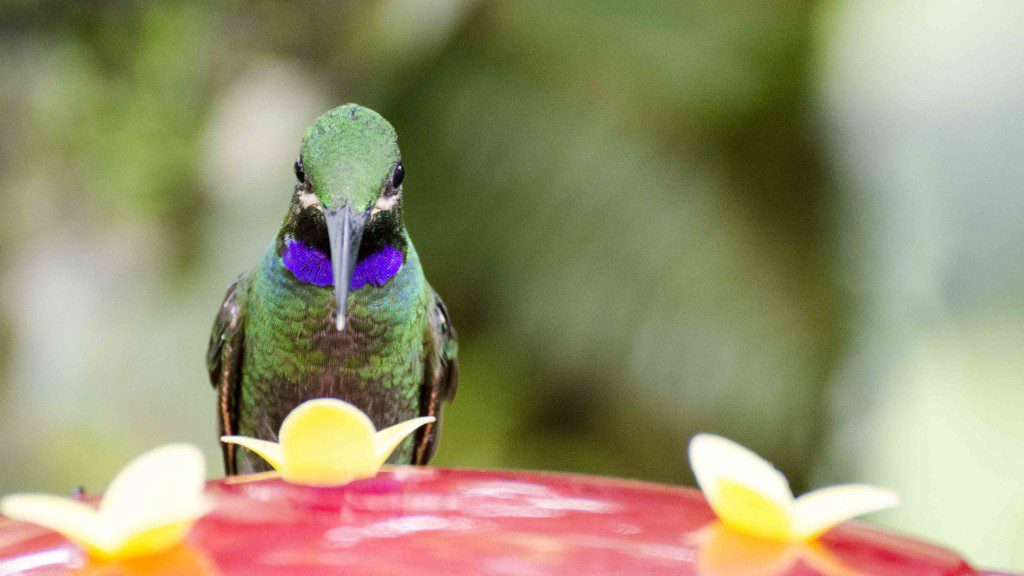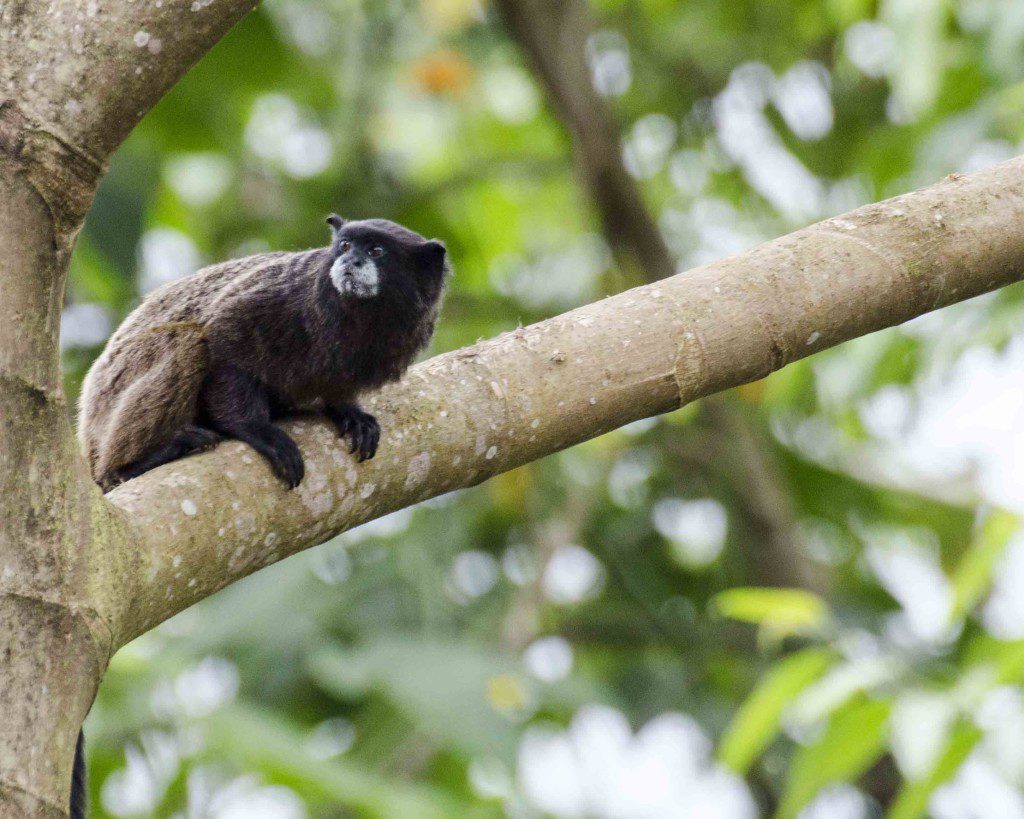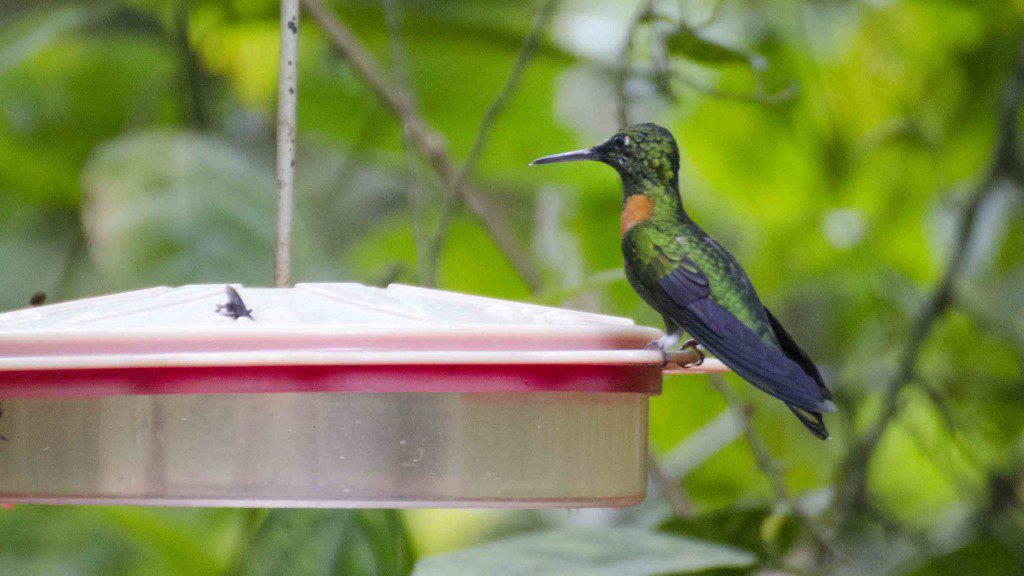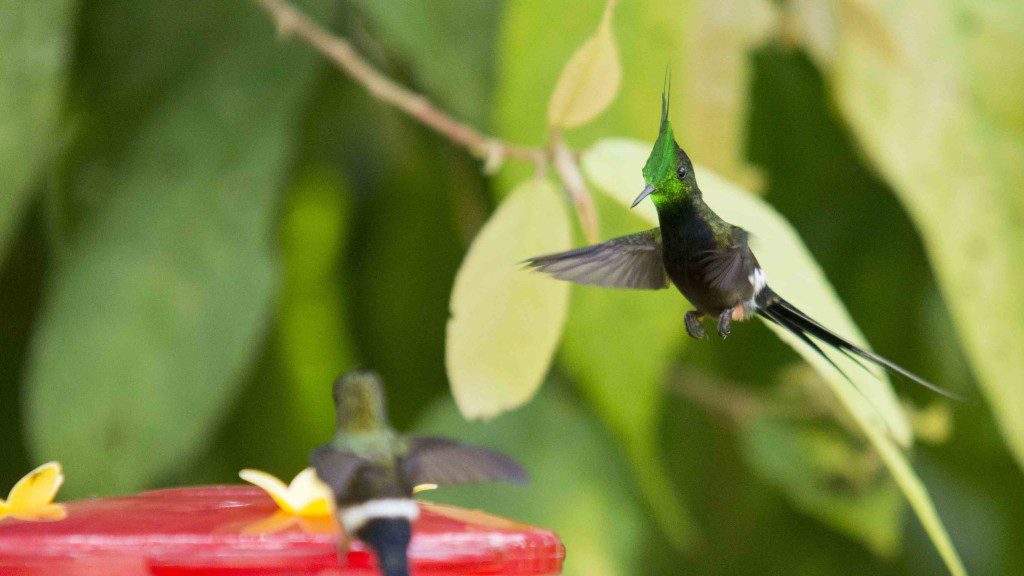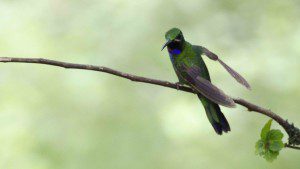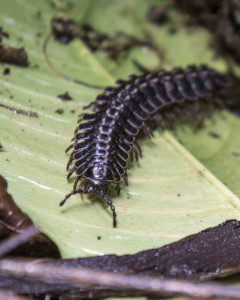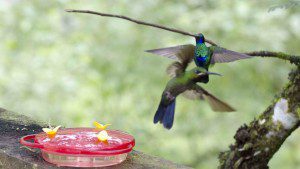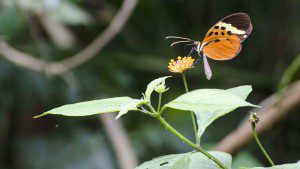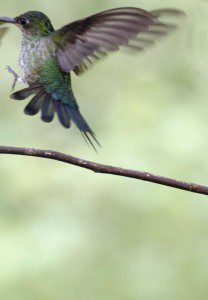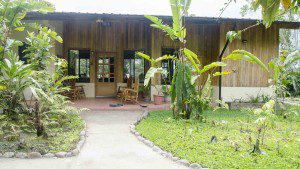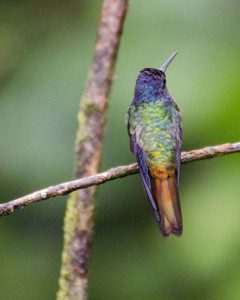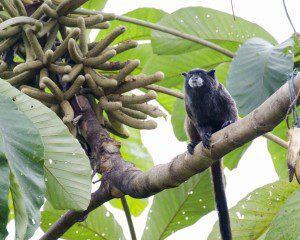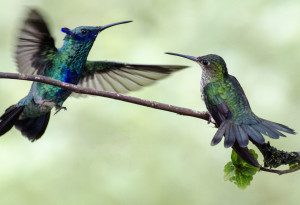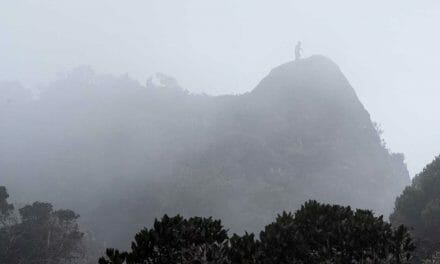As responsible travelers evolve, so do the stories we share.
This article is part of our living archive — trusted content we continue to care for.
First published on May 7, 2015 • Last updated on May 19, 2018.
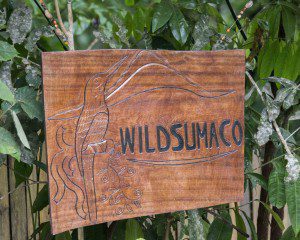 About a 5 hour drive to the east of Quito, driving towards the jungles of Ecuador, is a secluded wildlife reserve and lodge. Wildsumaco is tucked into the layers of foothills that lead up to the Andes. From the reserve, it is possible, on very clear days, to get a glimpse of Antisana to the east, or a lesser known volcano, Sumaco, to the north. The reserve borders Sumaco National Park, helping to extend protection to a little more of Ecuador’s endangered wilderness.
About a 5 hour drive to the east of Quito, driving towards the jungles of Ecuador, is a secluded wildlife reserve and lodge. Wildsumaco is tucked into the layers of foothills that lead up to the Andes. From the reserve, it is possible, on very clear days, to get a glimpse of Antisana to the east, or a lesser known volcano, Sumaco, to the north. The reserve borders Sumaco National Park, helping to extend protection to a little more of Ecuador’s endangered wilderness.
The owners of Wildsumaco are trying to protect even more endangered land – and the danger is clear as you drive up the gravel road past the small town of Sumaco to the lodge itself. Much of the forest has been cut down to plant naranjilla, a small, round fruit with a green rind and yellow-green center loved by Ecuadorians for its juice. In order to prevent more forest being converted to farmland, the lodge owners have developed a unique partnership with the local town. They rent acreage from the municipality so that it can be used for birding trails and for protection of local wildlife.
This means the birding opportunities here are rampant because there is a wide variety of terrain – primary forest, secondary forest, former grazing land, and former farm fields. Birders can see tanagers, woodpeckers, parrots, macaws, toucans, as well as smaller finches, sparrows, and flycatchers along with the well-advertised hummingbirds. And the list goes on. The hope is that increased tourism will also improve the local economy so that more forest does not have to be converted to farmland which will then revert to pasture after the soil has been depleted.
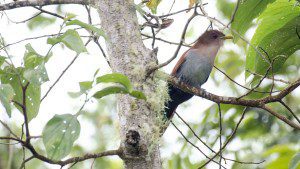 The birding is so plentiful here that you might have a hard time making choices. First, there is the deck at the lodge. It overlooks the tree canopy so that visitors are looking directly at prime birding habitat rather than up at it. Though you will need a good set of binoculars to see many of the birds, you won’t be disappointed. During our visit, several types of brightly colored tanagers flitted in and out of the high canopy, a Swallow-tailed Kite swooped in for the kill and grabbed a lizard from a tree right in front of our eyes, and a Squirrel Cuckoo hopped from nearby tree branch to tree branch two mornings in a row. And our sightings weren’t limited to birds. We saw a tiny dwarf squirrel scurrying up tree trunk in the distance and several tamarin monkeys scamper up and down one of the nearby fruiting trees in order to have a snack.
The birding is so plentiful here that you might have a hard time making choices. First, there is the deck at the lodge. It overlooks the tree canopy so that visitors are looking directly at prime birding habitat rather than up at it. Though you will need a good set of binoculars to see many of the birds, you won’t be disappointed. During our visit, several types of brightly colored tanagers flitted in and out of the high canopy, a Swallow-tailed Kite swooped in for the kill and grabbed a lizard from a tree right in front of our eyes, and a Squirrel Cuckoo hopped from nearby tree branch to tree branch two mornings in a row. And our sightings weren’t limited to birds. We saw a tiny dwarf squirrel scurrying up tree trunk in the distance and several tamarin monkeys scamper up and down one of the nearby fruiting trees in order to have a snack.
If the view in front isn’t enough, there are hummingbird feeders on either side of the deck. During our visit, the most common hummingbirds were the Golden-tailed Sapphire, the Many-spotted Hummingbird , the Booted-Rackettail (East Slope varient with puffy golden legs), the Wire-crested Thorntail, the Sparkling Violetear, and the Forktailed Woodnymph.
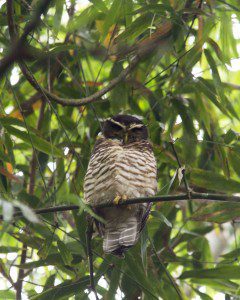 As great as the action was at the hummingbird feeders, the trails called as well. One trail is known for a pair of Rufous-banded Owls that perch fairly consistently in a dark spot low to the ground. Even with a great description of where to find the birds, we couldn’t. We returned with a local guide and found a single Rufous-banded Owl perched way up high on the opposite side of the trail from where he normally rests. And that’s how birding goes sometimes… those owls didn’t know they were supposed to obey any rules. The trails are also great places to see insect life and local flora.
As great as the action was at the hummingbird feeders, the trails called as well. One trail is known for a pair of Rufous-banded Owls that perch fairly consistently in a dark spot low to the ground. Even with a great description of where to find the birds, we couldn’t. We returned with a local guide and found a single Rufous-banded Owl perched way up high on the opposite side of the trail from where he normally rests. And that’s how birding goes sometimes… those owls didn’t know they were supposed to obey any rules. The trails are also great places to see insect life and local flora.
Another trail system back towards town takes you to another set of hummingbird feeders. Because they are at a different elevation, they attract some different specifies of hummingbirds. We added the Gould’s Jewelfront Brilliant, both male and female, at this set of feeders. I could have spent hours sitting there photographing the lovely visitors.
 I also loved walking along the road. It gave us ample opportunity to spot all kinds of birds, though often from a distance. It was a slightly frustrating experience for this photographer, who can’t afford more than her 300mm lens, but for photographers with better equipment, the shots could be amazing. We saw several toucans, military macaws, parrots, and some raptors. We also saw woodpeckers and flycatchers at regular intervals. Our most interesting catch goes to my husband who noticed small Rose-colored Parrots perched inside the knot of a tree. Too far away for a great photograph but it was an experience that can’t be repeated.
I also loved walking along the road. It gave us ample opportunity to spot all kinds of birds, though often from a distance. It was a slightly frustrating experience for this photographer, who can’t afford more than her 300mm lens, but for photographers with better equipment, the shots could be amazing. We saw several toucans, military macaws, parrots, and some raptors. We also saw woodpeckers and flycatchers at regular intervals. Our most interesting catch goes to my husband who noticed small Rose-colored Parrots perched inside the knot of a tree. Too far away for a great photograph but it was an experience that can’t be repeated.
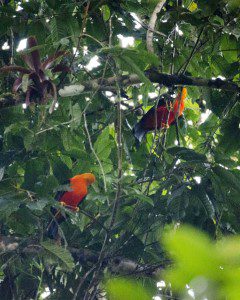 There are also a couple of unique opportunities provided by the lodge. Local guides will take you to an Antpitta feeding area, where, if you are lucky (very lucky), a couple of different varieties of Antpitta will come out to feed on small worms. We did sort of see them. The area where they feed was very dark and the birds were very fast. I would recommend setting up a camera on a tripod using very high ISO and videoing the experience. That way, you can slow down the video and capture images from there. And I don’t recommend taking your 16-year-old son. Let him sleep in that morning.
There are also a couple of unique opportunities provided by the lodge. Local guides will take you to an Antpitta feeding area, where, if you are lucky (very lucky), a couple of different varieties of Antpitta will come out to feed on small worms. We did sort of see them. The area where they feed was very dark and the birds were very fast. I would recommend setting up a camera on a tripod using very high ISO and videoing the experience. That way, you can slow down the video and capture images from there. And I don’t recommend taking your 16-year-old son. Let him sleep in that morning.
The other unique birding experience takes place near the lodge, but not on their property. We woke at 5am to meet a local farmer who showed us the way, in the dark, to a Cock of the Rock lek on his property. We arrived with the dawn to a cacophony of bird sounds unlike any other I have heard. This experience deserves a blog post all its own, but suffice to say it was a once in a lifetime opportunity.
Overall, we can highly recommend Wildsumaco Lodge. Whether you are looking to wear yourself out hiking the trails or get some rest and relaxation on the back porch (or a happy combination of the two) they have a lot to offer both the casual naturalist and the professional birder (and a 16-year-old bibliophile who loves to see an occasional bird).
- Black-throated Brilliant gets ready to defend herself.
- A Centipede
- The view from the deck of Wildsumaco Lodge.
- A Sparkling Violetear spars with a Black-throated Brilliant.
- Lots of butterflies when it is warm and sunny.
- Layers of Cloud Forest
- Many-spotted Hummingbird in defense mode.
- Entrance to Wildsumaco Lodge
- Golden-tailed Sapphire
- The deck at Wildsumaco Lodge.
- Tamarin Monkey visits fruiting trees near the deck of Wildsumaco Lodge.
- Swallowtail Kite flies over the deck at Wildsumaco Lodge.
- A Sparkling Violetear tackles a Many-spotted Hummingbird
- Tamarin Monkey visits fruiting trees near the deck of Wildsumaco Lodge.


